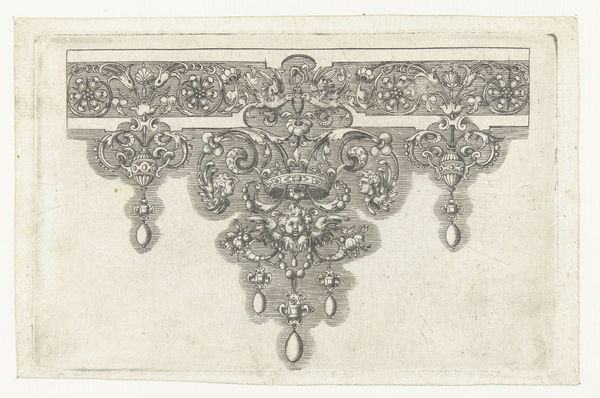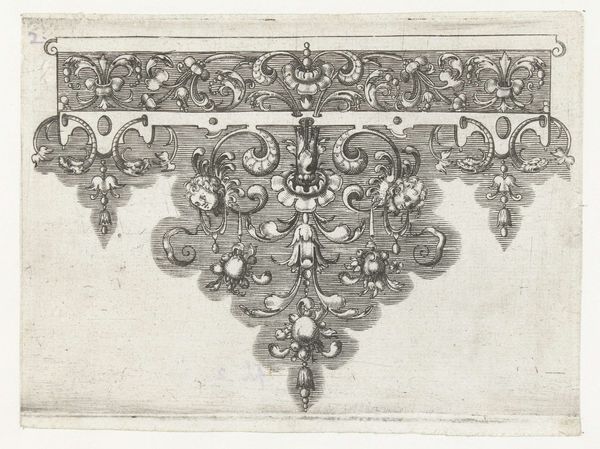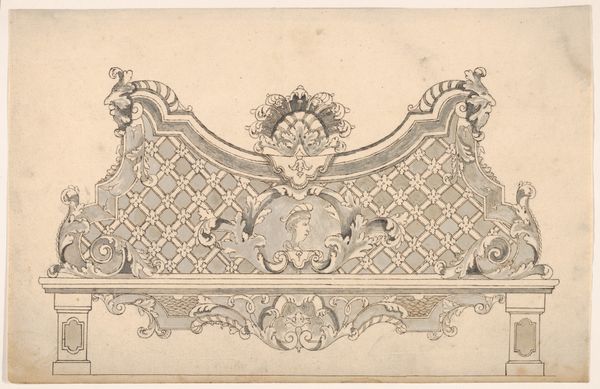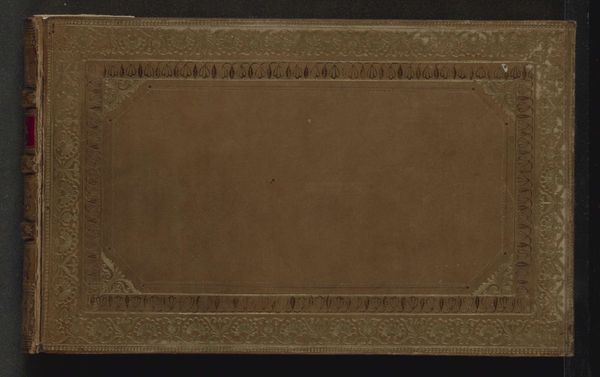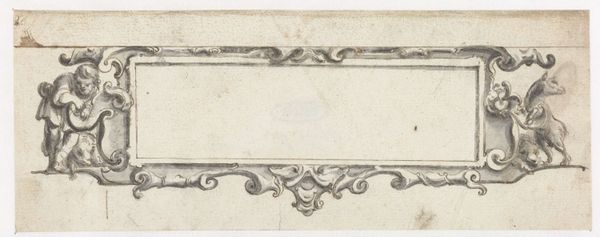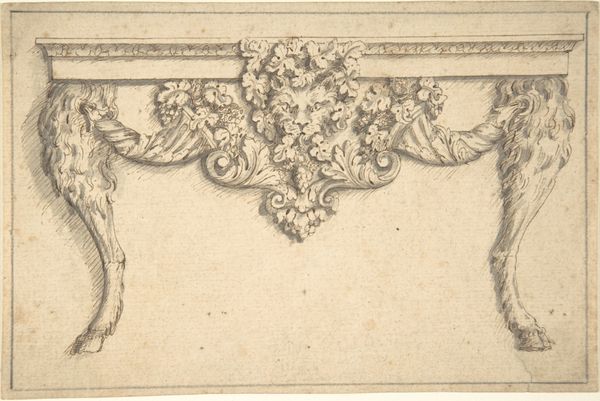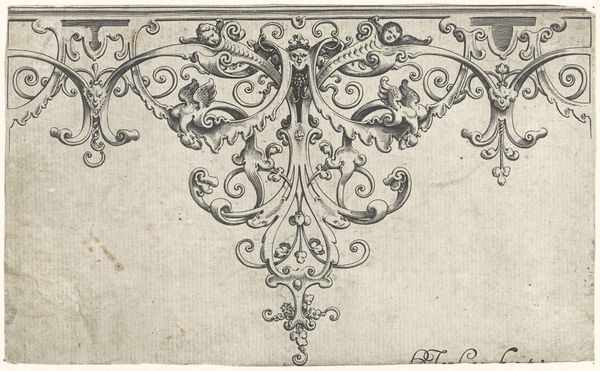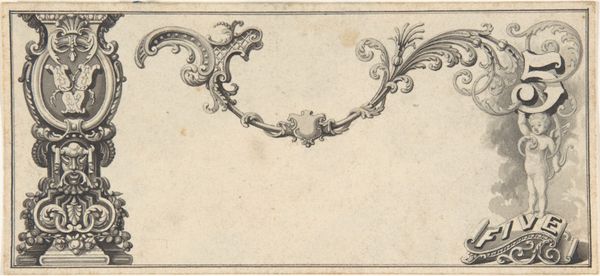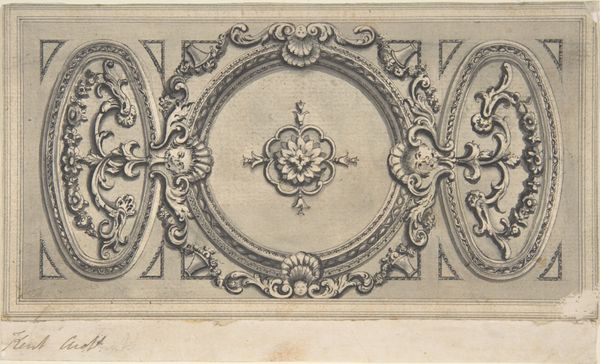
drawing, paper, pencil
#
drawing
#
allegory
#
baroque
#
figuration
#
paper
#
pencil drawing
#
pencil
Dimensions: height 52 mm, width 150 mm
Copyright: Rijks Museum: Open Domain
Editor: So, this drawing is entitled "Cartouche met twee putti," which translates to "Cartouche with Two Putti." It was created by Pieter Jansz sometime between 1630 and 1672, using pencil on paper. It strikes me as incredibly delicate. What can you tell me about its significance? Curator: Well, the cartouche itself, framed by these cherubic putti, functions as more than just decoration. It’s a symbolic stage. The Baroque era reveled in this sort of elaborate framework, suggesting a space for pronouncements, declarations, or perhaps, a family's coat of arms, literally framing identity and power. Editor: Interesting. So the putti… they're more than just cute babies with wings? Curator: Precisely. In Baroque symbolism, putti represent divine love and inspiration, they also guide. They’re visual cues suggesting that whatever would be inscribed in the cartouche would ideally be sanctioned by the divine or at least touched by grace. Do you notice how their positions seem to guide your eye? Editor: Yes, I do. They bookend the blank space, creating a sort of visual pathway. Is that space intentionally left blank? Curator: Quite possibly. It might have been a preliminary sketch, a suggestion waiting for a patron's specific commission. Or, it might have served as a powerful emblem in its own right – a space of potential, of something yet to be determined but always divinely guided. The empty cartouche can even signify hope. Editor: That's fascinating. I hadn't considered the symbolism of emptiness before. Curator: Indeed, this work demonstrates how even what is *not* present can carry enormous weight, reminding us that images can encapsulate cultural values that evolved and shifted over time.
Comments
No comments
Be the first to comment and join the conversation on the ultimate creative platform.

